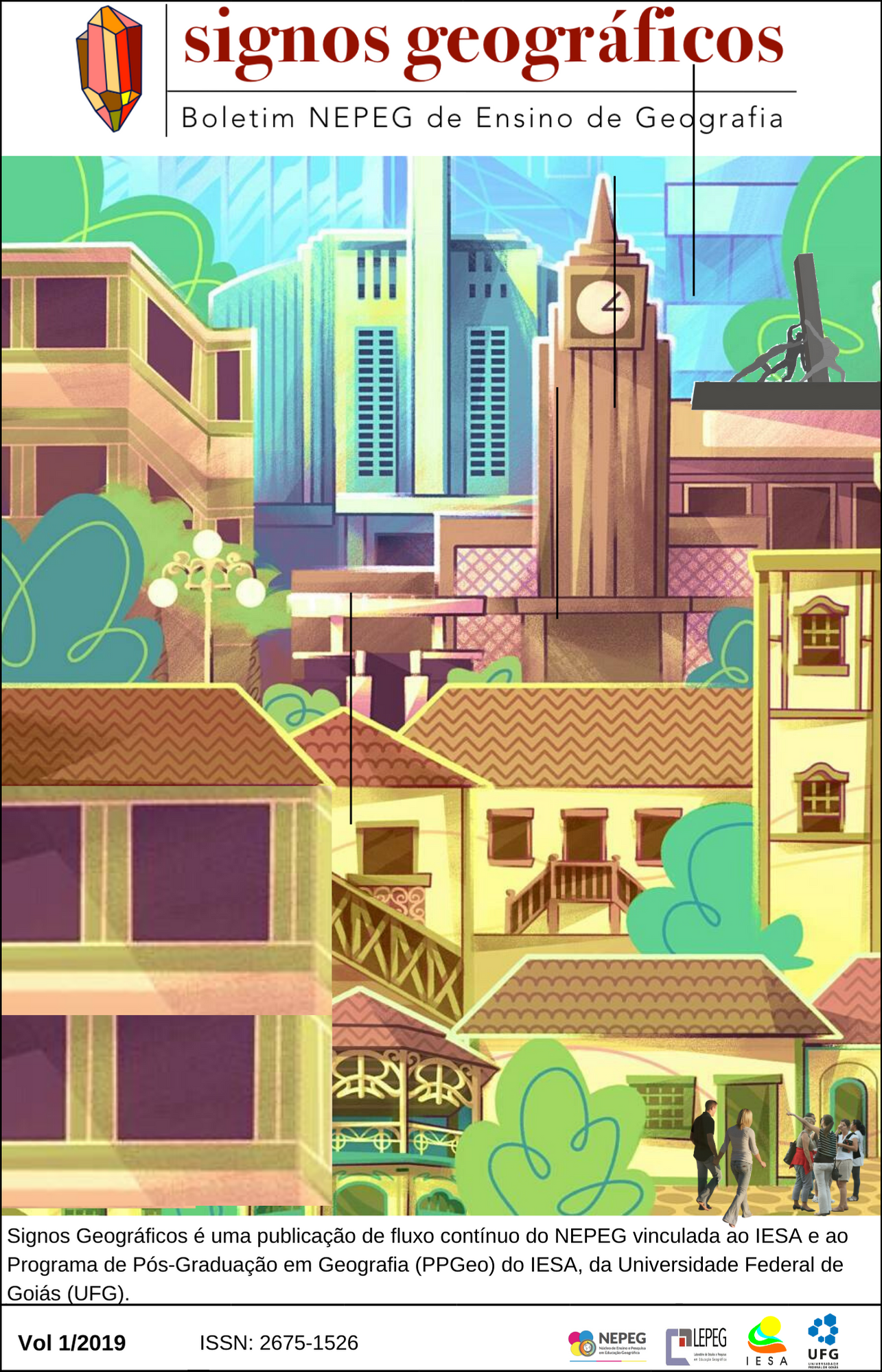THE CONTRIBUTIONS OF PEIRCEAN SEMIOTICS TO THE SIGN ANALYSIS OF TACTILE CARTOGRAPHY
Keywords:
geography teaching, cartography tactile, semiotics, thinking and geographical reasoningAbstract
It is well known that Geography teaching has the responsibility of making possible the elaboration of the thinking and reasoning that are proper to them. Considering the transforming and critical power of the geographic analysis of reality, it is imperative that all students have the possibility to develop such cognition. In this process, the cartographic language, which is capable of representing phenomena and objects through the bias of spatiality, is indispensable. Because it is visually structured, in the teaching of students with visual impairment, the Tactile Cartography takes on the function of adapting the graphic signs and making cartographic and geographical knowledge affordable. From the already consolidated foundations of the Tactile Cartography it is aimed to analyze such language through the Semiotics of Charles S. Peirce, which is a theory that contemplates verbal and nonverbal sign systems derived from the cultural and natural contexts.Thus, it is questioned: which analyzes the Peircean Semiotics allows to elaborate in relation to the structure of the graphic signs of visual and tactile expression, as well as, to the semiose process of subjects with visual impairment? It is emphasized that the proposed reflections are pertinent, since the absence or restriction of the sense of vision does not preclude the development of thought and geographic reasoning.








